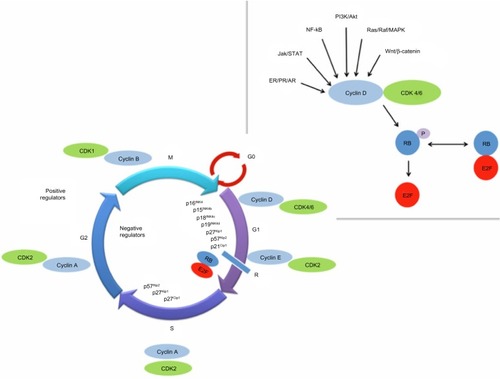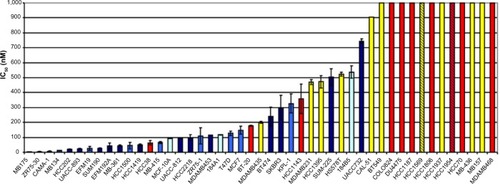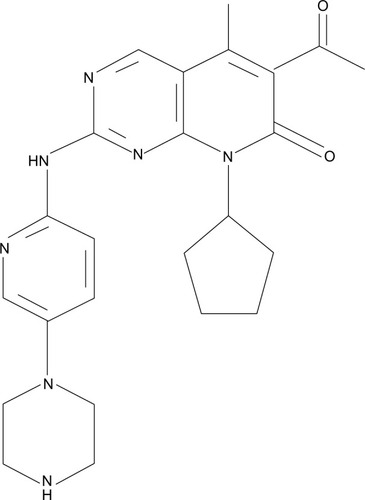Figures & data
Figure 1 The cell cycle and regulatory process.
Abbreviations: AR, androgen receptor; CDK, cyclin-dependent kinase; ER, estrogen receptor; NF-κB, nuclear factor κB; PR, progesterone receptor; RB, retinoblastoma; R, restriction point; P, phosphate.

Table 1 RB pathway alterations by breast cancer subtype
Figure 3 Inhibitory concentration and cell type.
Abbreviation: IC50, half maximal inhibitory concentration.

Table 2 Clinical studies of Palbociclib in breast cancer

